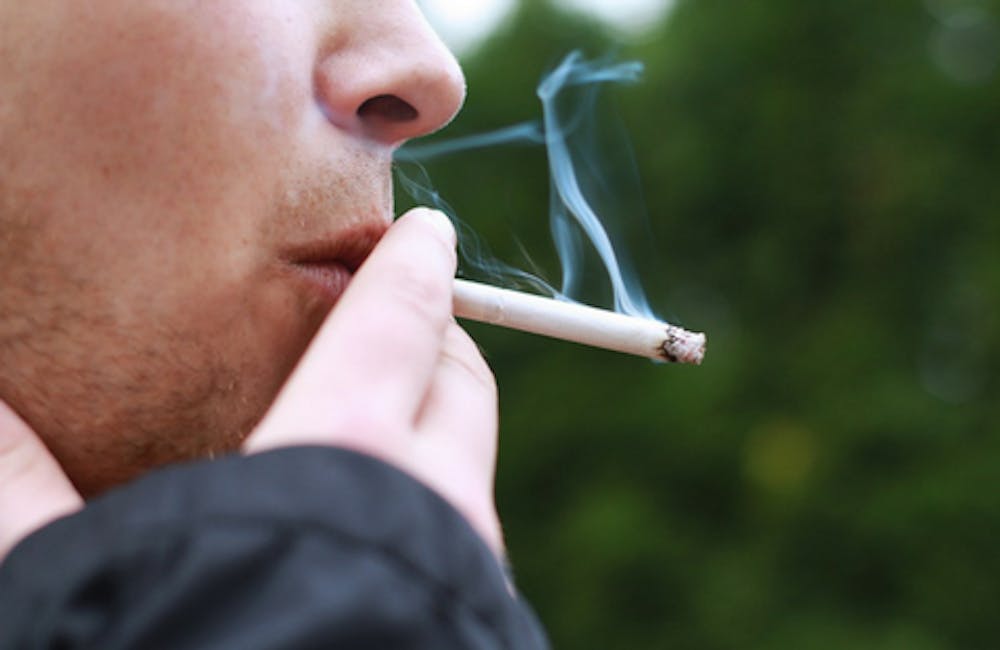Exposure to secondhand smoke has been shown to cause negative effects for pregnant women, such as an increased risk for miscarriage and low birth weight. But a new Duke study has found that expectant mothers are now less likely to face secondhand smoke.
Since the 2009 passage of the smoking ban in North Carolina—which outlawed smoking inside public places like bars and restaurants—pregnant women have experienced less secondhand smoke, according to the study, which was published in the International Journal of Environmental Research and Public Health last month.
“In particular, we were interested in women who were not active smokers but might have been exposed to secondhand smoke,” said Julia Schechter, assistant professor in psychiatry and behavioral sciences and the study’s lead author.
The researchers looked at the presence of cotinine—a biomarker in blood plasma that indicates nicotine exposure within the previous 48 to 72 hours—in 668 pregnant women recruited from Durham between 2005 and 2011 as part of a longitudinal study.
These tests showed most of the women had not been exposed to nicotine in the days prior to the test, and those who were exposed had lower average levels of cotinine after the ban was enacted than before.
“Even with very low levels of secondhand exposure, many studies have shown that low levels are associated with various adverse health effects including neural developmental outcomes in children,” said Jim Zhang, professor of global and environmental health and another author of the study. “We were trying to see whether the ban made a difference on the health outcomes.”
The study also found that there were still racial and socioeconomic disparities among those affected by secondhand smoke—in particular affecting women who are African American, have received less education and are unmarried.
Schechter explained that African American women may be more exposed to secondhand smoke because the African American population has historically been a main target of smoking ads.
“There’s been indication of differences in nicotine metabolism and a greater density of tobacco retail outlets in neighborhoods with a higher proportion of African Americans,” she said.
In addition, women who are unmarried or less educated may not have the resources to place themselves in environments that are more protected from secondhand smoke.
Zhang noted that personal behavior is related to exposure level, so if there are differences among different groups, then you will see exposure differences.
This research is significant because it shows that the smoking ban did have a positive impact on North Carolina residents, he said.
However, Schechter indicated that a third of the sample was still exposed to some level of smoke.
“While the results are encouraging, there's still the indication that there is more to be done,” she said.
She added that a more comprehensive ban on smoking throughout the South would further reduce the exposure.
Schechter’s team is continuing to follow the same women from the longitudinal study to see how various prenatal exposures affect their kids’ developmental outcomes. They are now collecting data on the children by bringing them into their lab and measuring different aspects of their functioning, such as eating behaviors and their performance on decision-making tasks.
“The study [will research] whether the ban will actually make children’s health better because of reduced maternal exposure to secondhand smoke,” Zhang said.
Get The Chronicle straight to your inbox
Signup for our weekly newsletter. Cancel at any time.

